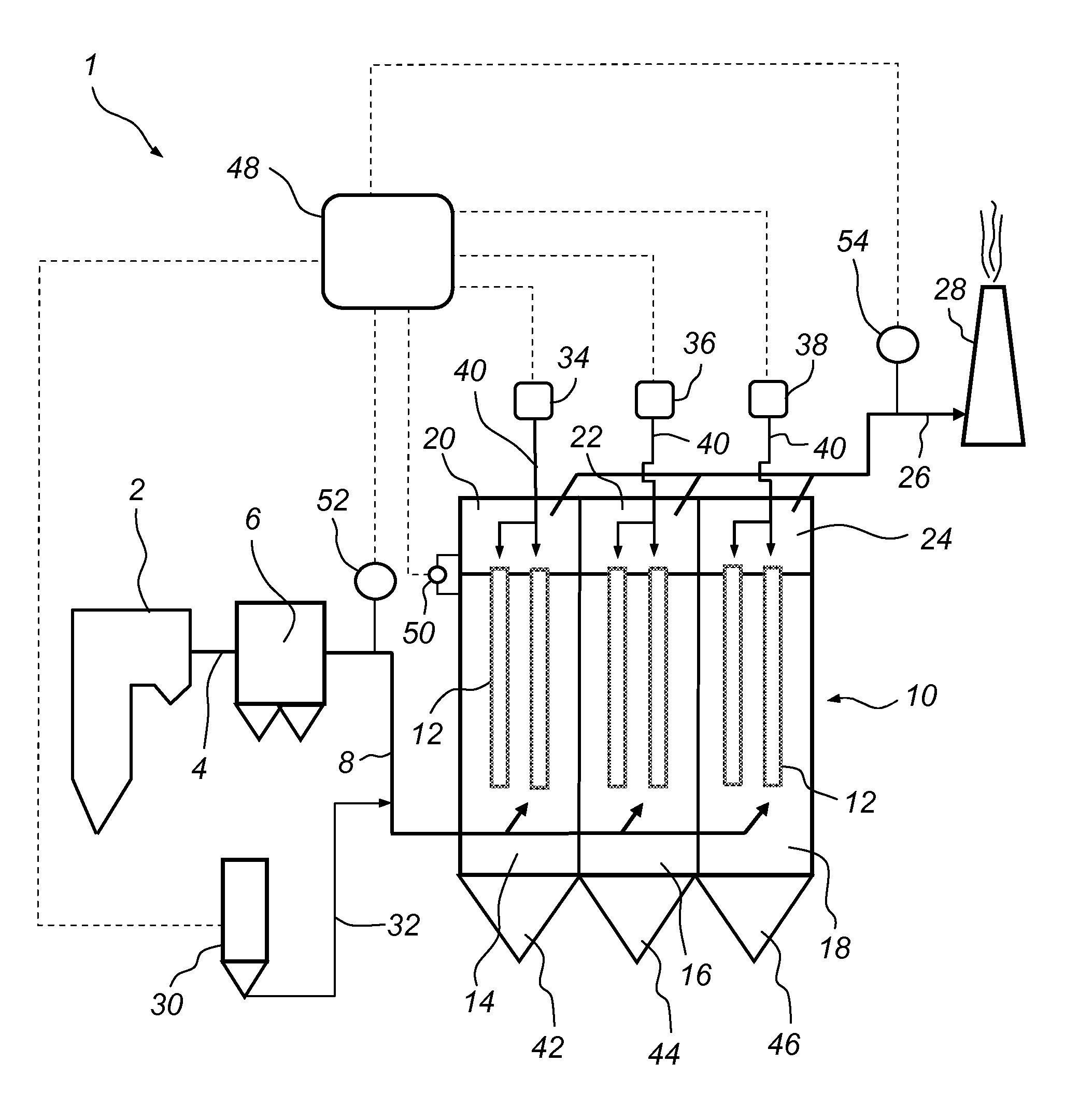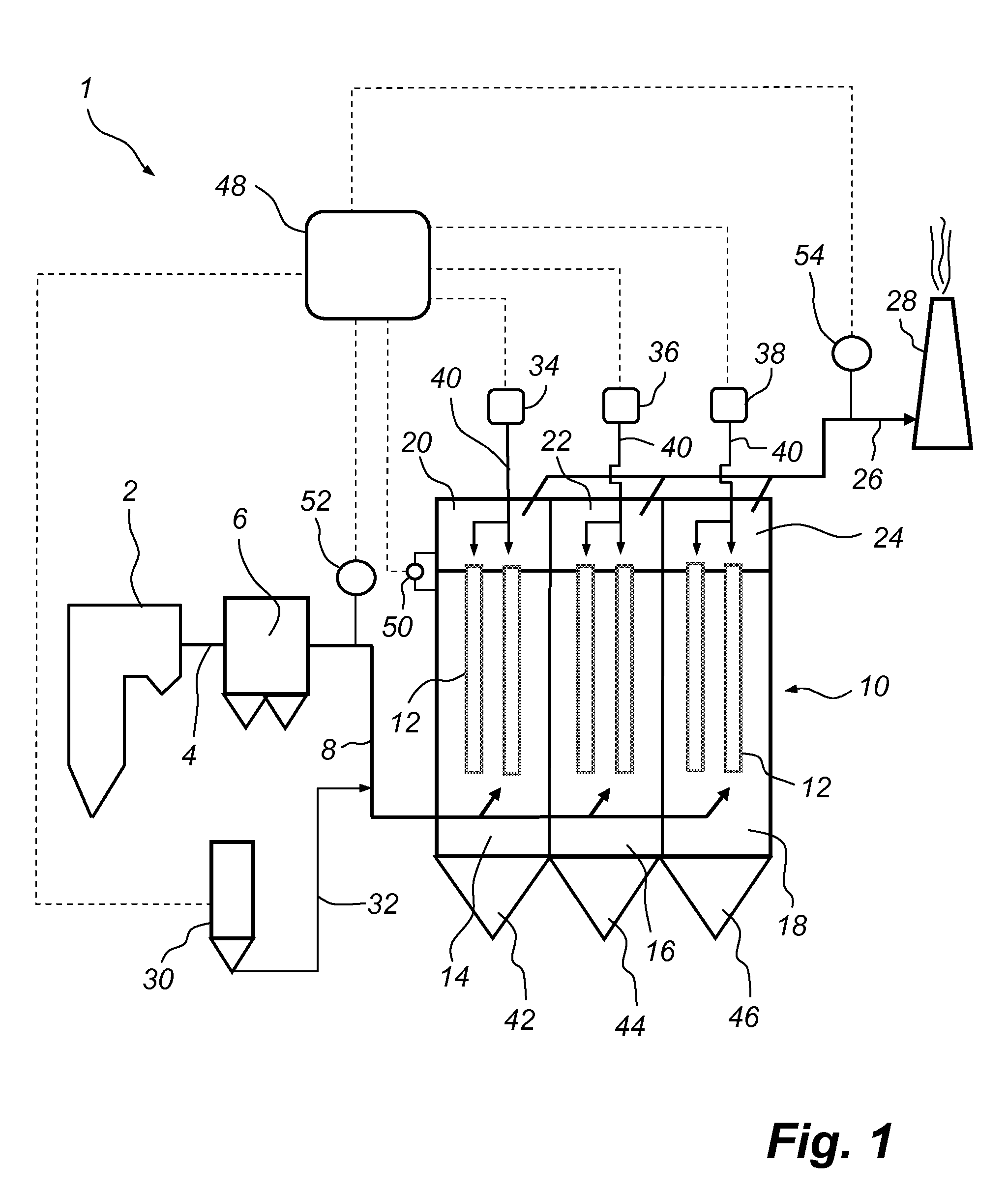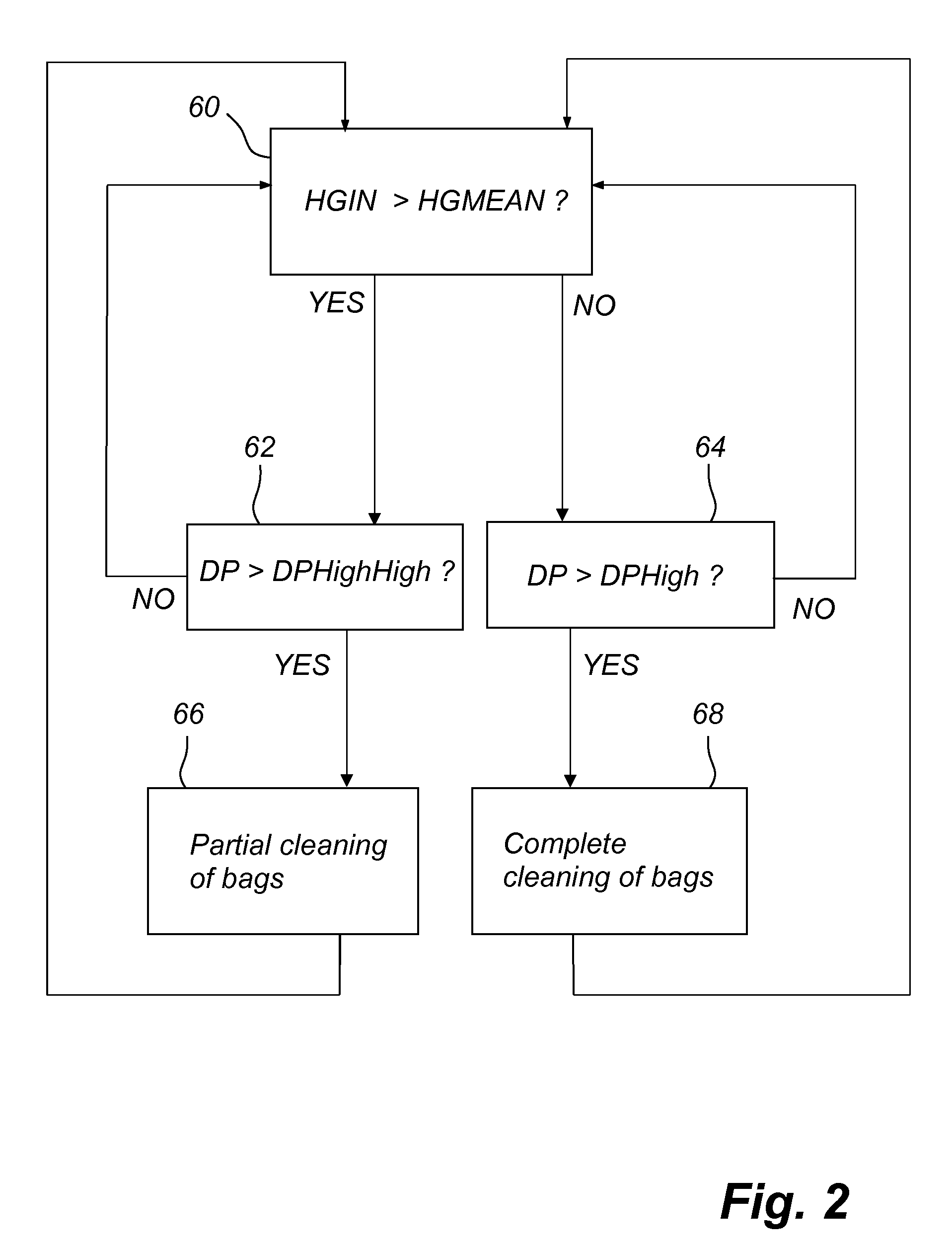Method and a device for removing mercury from a process gas
a technology of process gas and mercury, which is applied in the direction of separation process, dispersed particle separation, chemistry apparatus and processes, etc., can solve the problems of complex process that requires advanced control and expensive equipmen
- Summary
- Abstract
- Description
- Claims
- Application Information
AI Technical Summary
Benefits of technology
Problems solved by technology
Method used
Image
Examples
Embodiment Construction
[0036]FIG. 1 is a schematic side view and illustrates a power plant 1, as seen from the side thereof. The power plant 1 comprises a boiler 2. During combustion of a fuel, such as coal or oil, a hot process gas, often referred to as a flue gas, is generated in the boiler 2. The flue gas, which contains polluting substances, including dust particles and mercury, leaves the boiler 2 via a gas duct 4. The gas duct 4 is operative for forwarding the flue gas to a primary dust collector 6, which is optional, in the form of, e.g., an electrostatic precipitator, an example of which is described in U.S. Pat. No. 4,502,872, or a bag house, an example of which is described in U.S. Pat. No. 4,336,035. The primary dust collector 6 is operative for removing the major amount of dust particles from the flue gas.
[0037]A gas duct 8 is operative for forwarding the flue gas from the primary dust collector 6 to a secondary dust collector 10. The secondary dust collector 10 is a fabric filter, by which is...
PUM
| Property | Measurement | Unit |
|---|---|---|
| pressure drop | aaaaa | aaaaa |
| concentration | aaaaa | aaaaa |
| concentrations | aaaaa | aaaaa |
Abstract
Description
Claims
Application Information
 Login to View More
Login to View More - R&D
- Intellectual Property
- Life Sciences
- Materials
- Tech Scout
- Unparalleled Data Quality
- Higher Quality Content
- 60% Fewer Hallucinations
Browse by: Latest US Patents, China's latest patents, Technical Efficacy Thesaurus, Application Domain, Technology Topic, Popular Technical Reports.
© 2025 PatSnap. All rights reserved.Legal|Privacy policy|Modern Slavery Act Transparency Statement|Sitemap|About US| Contact US: help@patsnap.com



